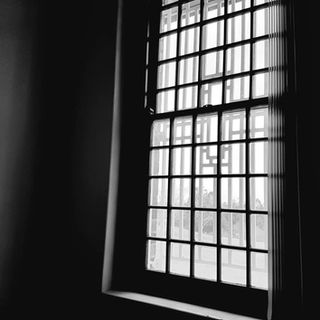

There Was Once an Asylum



This site not only provides an overview of mental health history and its implications for Goodna, but also explores the complex relationship between memory and history
There are stories we may never know, but this site uncovers the history, revealing the layers of understanding that form the foundation of the present.
It is done in a way that honours the patients, clients, and the people.
Dawson House
Built-in 1944
Dawson House was a former female patient acute ward 4 and is a substantial two-storey building with a basement, built into the steep slope at the northern end of the Female Patients Area. Purposely built as an acute ward for female patients, the building, in its design and layout reflects the principles of Mental Hygiene.
In 2020, it is used as a mental health training and research centre and is highly intact.
The building has its main front (south) entrance at the ground floor and rear (north) entrance at the basement level and retains its open semi-formal garden setting. Later additions and alterations, including stairwells (1965) at the northern ends of the wings, air-conditioning plant and ducting, non-original interior partitions enclosing and dividing former open spaces, and fire doors, are not of state-level cultural heritage significance.
Features of Dawson House of state-level cultural heritage significance also include:
• Form, scale, and materials: large, symmetrical, H-shaped, two-storey brick building with basement, with a hip roof clad with corrugated metal; face brick walls with concrete dressings, with rendered basement level scribed with horizontal lines; stepped brick central bay surrounding main entrance at ground floor; flat-roofed stair and lift towers at the junctions of the middle and end wings, with brick porches forming secondary entrances at ground floor; projecting central bay with decorative surrounds to rear entrance (former open shelter) at basement level; metal water goods; concrete floors; plaster masonry partitions, sheet-and-batten-lined ceilings
• Layout: central transverse passage along the middle wing of all levels, with enclosed stairwells at both ends (the east well containing a lift); ground floor accommodated a main entrance lobby, doctors and nurses offices and treatment rooms (middle wing), open dormitories, single patients rooms and ablutions (middle and west wings), and communal dining rooms (east wing); first floor accommodated open dormitories, single patients rooms and ablutions; basement accommodated rear entrance open shelter area, offices, stores and toilet areas, large open sewing room (west wing) and communal bathrooms (east wing)
• Joinery: multi-paned double-hung sash windows; clear-finished interior joinery including panelled, boarded and multi-paned doors, fanlights and architraves; enclosed stair and lift (east) wells with clear-finished timber panelling and woven metal mesh, and timber handrails
• Details associated with patient management (security, safety, hygiene): rounded corners to walls; observation panes in doors to patient rooms; square-grid metal security mesh to fanlights and high-level openings along passage walls; decorative metal window security grilles to patient and communal rooms
• Spacious open garden setting: surrounding open lawns, including sloping grounds and terraces on its east and west sides; mature trees, including poinciana, fig, camphor laurels, and jacarandas; formal front gardens with symmetrically arranged lawns, hedges, and concrete paths.
Research Note:
This was the first building to reflect medical superintendent Dr Basil Stafford's modern ideas.
Dawson House was a new female building completed in 1944.
which provided accommodation for 60 patients and was located on a sloping site close to the existing female wards.
It was recognised that a building with a basement could be built on such topography, with the basement accommodating treatment rooms for cardiazol therapy, insulin therapy, malaria therapy, somnifaine or continuous narcosis therapy and other medical treatments.
The most striking difference was that minimal attention was given to the outside environment; this building was inward-looking, signalling the demise of the significance placed on the environment in 'moral treatment' and the increasing medicalisation of the treatment of mental health.























